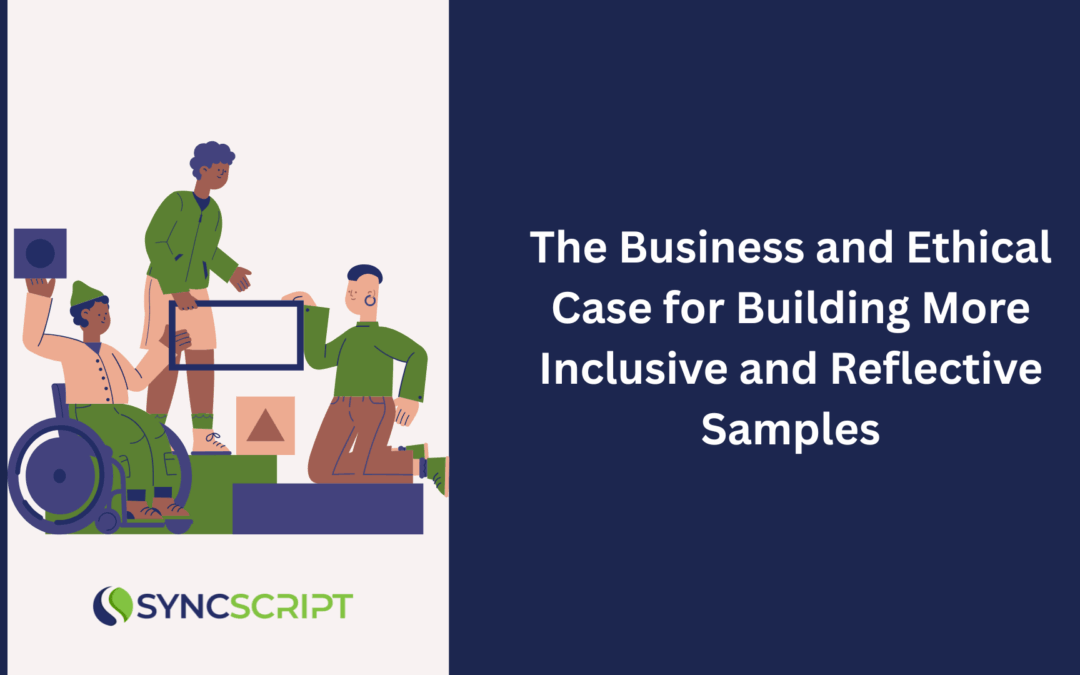Why Representation Can’t Be an Afterthought
In qualitative market research, our core goal is to understand people—their motivations, their behaviors, and their lived experiences. But if the people we engage in interviews, focus groups, or ethnographies don’t reflect the diversity of our markets, we risk drawing conclusions based on incomplete or skewed narratives. In an era where inclusivity is no longer optional but essential, representation in research samples is a moral imperative and a strategic advantage.

The Ethical Case: Reflecting Real Lives
Too often, research recruitment defaults to convenience samples—those who are easiest to reach or who respond most readily AKA “cheater repeaters.” This might mean hearing predominantly from certain demographics (e.g., white, middle-class, urban participants) while excluding voices from marginalized communities, rural areas, or non-native English speakers.
Ethically, this is a problem. It reinforces systemic biases and underrepresents the perspectives of communities that are already underserved. If our research is to be a tool for truth and transformation, it must reflect the full spectrum of human experience—race, gender, age, geography, disability, socioeconomic status, and beyond.

The Business Case: Better Decisions from Better Data
Inclusion isn’t just “the right thing to do”—it’s a pathway to more effective marketing, product development, and strategy.
Here’s why:
- Market Relevance: Brands that understand the unique needs of diverse audiences are more equipped to build loyalty and trust. Without inclusive research, opportunities are missed, and messaging falls flat.
- Risk Reduction: Exclusion leads to blind spots. From PR missteps to underperforming campaigns, the cost of not hearing from the right people is real.
- Innovation Catalyst: Diverse perspectives spark new ideas. By including a wide range of voices, qualitative research becomes a driver of creative, out-of-the-box thinking.
Practical Barriers and How to Overcome Them
Of course, inclusive recruiting has challenges: harder-to-reach populations, language barriers, digital divides, or cultural mistrust of research processes. But the industry is evolving with solutions:
- Community-Based Recruitment: Partner with grassroots organizations, local leaders, and cultural brokers who already have trust.
- Tech-Enabled Access: Use mobile-first platforms, multilingual tools, and flexible formats to reduce friction for underrepresented groups.
- Bias-Aware Screeners: Re-examine inclusion/exclusion criteria in your recruitment screeners. What assumptions are you baking in? Are you unintentionally filtering out the very people you should be listening to?
- Incentive Equity: Understand what compensation is meaningful and accessible to different communities.

Representation Drives Relevance
Inclusive recruiting isn’t just about checking boxes—it’s about uncovering insights that drive real impact. When your sample reflects the people you aim to serve, your findings are richer, your strategies sharper, and your outcomes stronger.
In a world that demands equity and empathy, inclusive market research is no longer a niche priority—it’s a business-critical necessity.
🔍 Let’s Continue the Conversation
How is your team working to build more inclusive samples? What challenges are you facing—and what wins have you seen? Let’s connect and share best practices.


